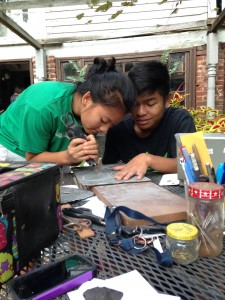As I transitioned out of my role as Program Director at Computers4Kids, I wanted to make sure that I didn’t lose contact with a number of students who I had formed especially close relationships. I had a group of them out to my house on Sunday to “build stuff” as they requested. I provided ingredients for lunch, computers for looking up plans, lumber and simple building tools. Fatuma, college freshman, was our documentarian. Her words and pictures are below.

Fatuma was trying to make this small beautiful doll house, but it kinda didn’t work out, so instead she is making a bird house. 🙂

July is looking for bird house design on the web! P.S. the bird house she made was amazing! The little birds will love it!

Fatuma trying to get started with her beautiful bird house. There were times when she really wanted to give up but Miss Dolly kept on motivating her! 🙂

Miss Dolly helping July with her bird house plan! If it wasn’t for Miss Dolly, nothing would have gone right! Thanks Miss Dolly, we love you!

Now this is what I call a amazing teamwork! July helping Zarny with the dremel tool to help it carve better!

Zarny slicing the chicken apart! P.S. he sliced it first and than he asked if he should all cut the chicken into pieces! lol!










